Philip K. Dickathon: The Penutimate Truth
Guest Blogger and WWEnd Member, Charles Dee Mitchell, has contributed a great many book reviews to WWEnd and we’ve invited him to contribute to our blog. This is the latest in Dee’s series of Philip K. Dick reviews that he started on his blog www.potatoweather.blogspot.com. We’ll be posting one every week until he runs out of reviews or gets tired of Philip K. Dick books.
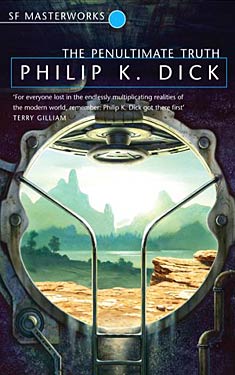 I never care for books that claim to be as pertinent today as the day they were written or to contain a story that could be ripped from today’s headlines. Copies of The Penultimate Truth (1964) do not make those claims, but as we watch the various "Occupy" movements take place, I couldn’t help but think that Philip K. Dick‘s novel described a society badly in need of an Occupy Earth movement.
I never care for books that claim to be as pertinent today as the day they were written or to contain a story that could be ripped from today’s headlines. Copies of The Penultimate Truth (1964) do not make those claims, but as we watch the various "Occupy" movements take place, I couldn’t help but think that Philip K. Dick‘s novel described a society badly in need of an Occupy Earth movement.
As is so often the case with PKD novels, there has been an atomic war. I think he places this one in the 1980’s, and he still imagines such a conflict would involve Western democracies and Soviet controlled countries. As bombs drop, much of the fighting is carried on by "leadies," robots manufactured to be soldiers. With spreading radiation, millions of earthlings are moved underground into what are unflatteringly known as Ant Tanks. Now safe from the radiation and destruction, the tankers’ sole function is to manufacture an unending supply of leadies for the war effort.
Several decades pass, the war goes on, and tankers receive nightly news reports of just how bad the situation continues to be. There is just one catch. A treaty ended the war years ago. As radiation hot zones continue to decrease, the ruling elite that has remained topside has decided that life without hundreds of millions of the common sort is not so bad. Let them stay in their ant tanks, producing leadies that go not into the war effort but become the worker bees for that 1% that now live in lavish mansions on thousand acre demesnes. The only real work done by humans is the effort to maintain the illusion that life topside is hell and that the tankers are best off where they are.
But the strains are beginning to show. Radiation has sterilized most of the human race, and the advertising men, government officials, and police agencies that rule the globe are paranoid, bored, and slipping into senility. Down below, tankers realize that certain things just don’t add up. When the chief engineer of the Tom Mix Tank dies of pancreatic cancer, his tank colony is terrified that they will not be able to meet their leadie production quotas. The engineer is flash frozen and the president of the group is sent tunneling to the surface, despite all the dangers, in search of an artiforg pancreas that will save the day.
The Penultimate Truth is one of PKD’s more tightly constructed and coherent narratives. There are plots and counterplots and mysteries; and the characters have coherent motivations. Perhaps readers will miss the wild ride of something like The Three Stigmata of Palmer Eldritch but coming after the grab bag of The Simulacra and the perverse incoherence of Lie’s, Inc. I found it a satisfying read. There is a lot of talk as characters explain the situation to one another, and tortuous internal monologues are not uncommon. But this keeps the novel to the 200 page sweet spot and what action set pieces take place are well told. An assassination scene is one of PKD’s most creepily effective episodes. You may want to toss any old portable TV sets you still have lying around after you read it.
One highlight of twisted thinking among the elite topsiders is that if the hoi polloi come streaming back to the surface, another war will be inevitable. Since when did commoners start wars? I think they are mistaking war for some serious ass kicking. If I remember my history correctly, wars are started by those very people who are running PKD’s future earth like a well-oiled but fatally flawed machine.
Philip K. Dickathon: Lies, Inc.
Guest Blogger and WWEnd Member, Charles Dee Mitchell, has contributed a great many book reviews to WWEnd and we’ve invited him to contribute to our blog. This is the latest in Dee’s series of Philip K. Dick reviews that he started on his blog www.potatoweather.blogspot.com. We’ll be posting one every week until he runs out of reviews or gets tired of Philip K. Dick books.
 Over the past year I have read I think 15 Philip K. Dick novels in more or less chronological order. I have read some good ones, some bad ones, some sloppy ones, and a couple of brilliant ones. Lies, Inc., is the first I have read the pissed me off. A certain level of incoherency comes with the PKD territory, and keeping up with what he is thinking and typing furiously onto the page is part of the fun. But this time out, he creates an irritating mess.
Over the past year I have read I think 15 Philip K. Dick novels in more or less chronological order. I have read some good ones, some bad ones, some sloppy ones, and a couple of brilliant ones. Lies, Inc., is the first I have read the pissed me off. A certain level of incoherency comes with the PKD territory, and keeping up with what he is thinking and typing furiously onto the page is part of the fun. But this time out, he creates an irritating mess.
This novel had a chaotic publication history, and it’s problems stem from editors’ determination, early on with Dick’s approval, to make it into a book. In 1963 or 1964, PKD wrote, along with about a dozen other novels, The Unteleported Man, intended for Fantastic Stories or some other Ace Books outlet. (All this information comes from the afterward to the current edition of Lies, Inc., published by Vintage.) With the short novel already in hand, Donald Wolheim, publisher of Ace Books, received what he thought was a really cool cover painting and asked PKD to expand his novelette into book form so the cover might be used. PKD doubled the length of the novelette, but Wolheim, reportedly, was not pleased with Part Two. (If his reaction was indeed that mild, publishing, in the 1960’s, remained a “gentleman’s profession.”) Part One appeared in 1966 as part of an Ace Double. In 1979, now working with Berkeley Publishing, PKD had the idea of issuing the complete novel, although what he found of Part Two was missing around a dozen pages of text. PKD wrote a new opening, filled in most but not all of the gaps, and decided that Part Two, rather than succeeding Part One, should appear about halfway into Chapter 8 and end somewhere in Chapter 15. The book, retitled Lies, Inc., winds up in another 25 pages. It was not published until 1983, sixteen months of PKD’s death and melodramatically labeled “uncensored.”
All of the above is more interesting than anything else about the book. I will not pretend to summarize the plot, but Part Two has the main character appearing on another planet under the false identity that had been assigned to a different character. He is immediately injected with LSD, and PKD wallows in a hyperbolic description of the LSD experience for almost fifty pages. Somebody, more dedicated than myself, might dig up a copy of the short Unteleported Man and see if it makes sense. But Lies, Inc., spins so seriously out of control that I cannot even recommend it for PKD Completists. It is only for PKD Masochists.
Philip K. Dickathon: The Simulacra
Guest Blogger and WWEnd Member, Charles Dee Mitchell, has contributed a great many book reviews to WWEnd and we’ve invited him to contribute to our blog. This is the latest in Dee’s series of Philip K. Dick reviews that he started on his blog www.potatoweather.blogspot.com. We’ll be posting one every week until he runs out of reviews or gets tired of Philip K. Dick books.
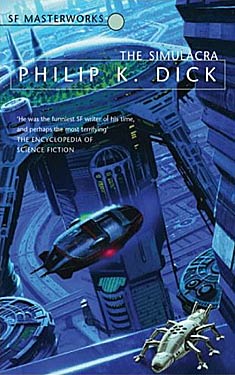 The Simulacra is Philip K. Dick‘s grand, panoramic novel. He sweeps the reader from the highest corridors of power in Washington, D.C., to the lush rain forests of the Pacific North West and the colony of mutants who inhabit them. We meet Nicole Thibodeaux, the First Lady of the United States and the most powerful woman in the world; Richard Kongrosian, a psycho-kinetic musician who performs without touching the keyboard; and Looney Luke, semi-legal dealer in jalopies, outdated spacecraft good enough for a one-way trip to Mars. There is intrigue, betrayal, deception, and the threat of war.
The Simulacra is Philip K. Dick‘s grand, panoramic novel. He sweeps the reader from the highest corridors of power in Washington, D.C., to the lush rain forests of the Pacific North West and the colony of mutants who inhabit them. We meet Nicole Thibodeaux, the First Lady of the United States and the most powerful woman in the world; Richard Kongrosian, a psycho-kinetic musician who performs without touching the keyboard; and Looney Luke, semi-legal dealer in jalopies, outdated spacecraft good enough for a one-way trip to Mars. There is intrigue, betrayal, deception, and the threat of war.
Wait a minute. PKD didn’t write grand, panoramic novels. Not that all the above isn’t true. In fact it suggests no more than a fraction of the goings-on in The Simulacra. But it all goes on in the usual two hundred or so pages common to PKD’s novels. This is his most chaotic book. Every chapter for the first third of the novel introduces two or more new characters. What connections there will ever be among them is difficult to imagine. But much of what happens focuses on pleasing Nicole, who spends much of her time auditioning new acts to perform at her functions, or planning yet another televised tour of the White House. (Only readers of a certain age will get this joke.)
PKD tossed a lot of stray ideas into this one. Most of the ideas are good, the situations very funny, but he does not manage to do much more than let them fizzle out towards the end. Readers may be either irritated or exhausted, but the wiser choice is to just go along for the ride.
As in most of the novels from this period, there is moment when a female character lets loose with either a kind of praise or criticism that PKD must have wished for or dreaded hearing from whoever was his wife at the time. Here is Nicole talking about Richard Kongrosian.
"Oh the hell with it," Nicole said. "I’m tired of his ailments. I’m tired of having him pamper himself with his hypochondriacal obsessions. I’m going to toss the entire power and majesty and authority of the state at him, tell him point blank that he has got to give up his imaginary diseases."
Ouch. But even though Kongrosian is a hypochondriac he still has the power to psycho-kinetically transport one of Nicole’s gun-wielding agents to the White House laundry room when necessary. The author remains in control.
Philip K. Dickathon: Clans of the Alphane Moon
Guest Blogger and WWEnd Member, Charles Dee Mitchell, has contributed a great many book reviews to WWEnd and we’ve invited him to contribute to our blog. This is the latest in Dee’s series of Philip K. Dick reviews that he started on his blog www.potatoweather.blogspot.com. We’ll be posting one every week until he runs out of reviews or gets tired of Philip K. Dick books.
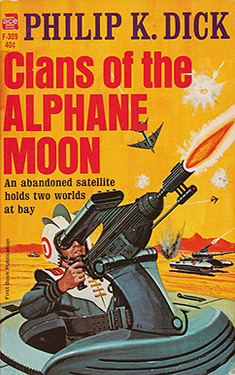 Philip K Dick spent a great deal of time in and out of psychiatrists’ offices. He had bouts of agoraphobia from the time he was a teenager and went through several spells of clinical depression. He knew the psychiatric lingo and at times used it as rigorously in his personal relationships as he did in his books.
Philip K Dick spent a great deal of time in and out of psychiatrists’ offices. He had bouts of agoraphobia from the time he was a teenager and went through several spells of clinical depression. He knew the psychiatric lingo and at times used it as rigorously in his personal relationships as he did in his books.
Alpha III M2, the setting for Clans of the Alphane Moon, is one of the purest creations of his experiences with mental health professionals. Alpha III M2 is a small moon in the Alpha Centauri system used by Earth as a global mental facility. The moon was one giant hospital treating all known forms of mental derangement. The fact that these break down to only a half dozen or so reflects the mid-sixties when the novel was written. The DSM had not yet expanded to include everything from psychosis to social anxiety disorder (shyness.) A minor war with the Alphanes has left Alpha III M2 to its on devices for over twenty years. Earth is finally sending ships to check up on how things are going.
Meanwhile back on earth, Chuck Rittersdorf has been tossed out by his wife, a successful marriage counselor, and now lives in a rundown conapt that sounds a little bit like the first apartment I had in college. He survives on the small salary he makes programming simulacra for CIA propaganda missions. His best new friend is a Ganymedean slime mold named Lord Running Clam.
One reason I enjoy writing about PKD is that I can write Paragraph One (above), follow it by Paragraph Two (above), and still be writing about the same novel. PKD said later in his career that he realized his writing technique involved starting multiple plots and then seeing how he could bring them together. I think this is usually referred to as "making it up as you go along." Chuck contemplates murdering his wife. Bunny Hentzman, one of PKD’s frequent world-renowned entertainers that exercise a bizarre control over Earth’s culture, hires Chuck at a terrific salary, but counter-intelligence operations within the CIA and the Hentzman organization make Chuck a hunted man. As in a French farce of a Preston Sturges comedy, everyone ends in the same place, Alpha III M2, either shooting it out with laser pistols or making desperate diplomatic moves to keep Earth and Alpha out of a war and the main characters out of prison.
A strangely touching and revealing moment comes when Chuck, having agreed to another battery of psychological testing, has these thoughts which sound straight from the heart of PKD:
"Suppose the tests show no drift, no neurosis, no latent psychosis, no character deformation, no psychopathic tendencies, in other words, nothing. What do I do then?" … he had an inkling that that was exactly what the tests would show. He did not belong in any of the settlements here on Alpha III M2; here he was a loner, an outcast, accompanied by no one even remotely resembling him.
Maybe not exactly a cri de coeur, but it seems one of the most personal statements PKD has made in his work to this time.
But then again, his is also improving his knack for toss away nuttiness. Here’s the opening to Chapter 8:
When, late that night, Chuck Rittersdorf wearily returned to his rundown conapt in Marin County, California, he was stopped in the hall by the yellow Ganymedean slime mold. This, at three a.m. It was too much.
Automata 101: Cyborgs and Androids – Part 2
Rhonda Knight is an Associate Professor of English at Coker College in Hartsville, SC. She teaches Medieval and Renaissance literature as well as composition courses. This blog will outline her experiences teaching an Honors English Composition course about created entities, beginning with the golem of Jewish legend and continuing through cyborgs, robots, androids, and artificial intelligence.
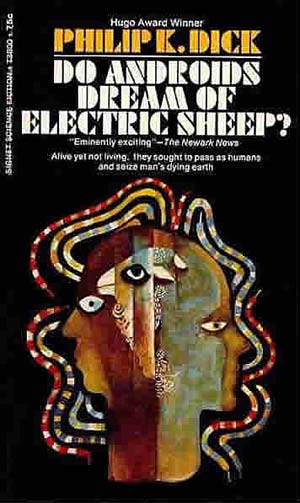 I taught Philip K Dick’s Do Androids Dream of Electric Sheep? and Ridley Scott’s Blade Runner (1982) as a unit. I had not taught a PKD novel before, and I thought that his style would be a challenge for the students. Previously, I had taught some of his short stories (“The Hanging Stranger,” “Exhibit Piece,” “The Chromium Fence,” “We Can Remember It For You Wholesale,” “The Minority Report,” and “Paycheck”) in a science fiction class to mixed results. In that class, the students who were familiar with such shows as The Twilight Zone and The Outer Limits were able to see similarities between them and PKD’s stories. However, most of them did not have the historical understanding of 1950s and 1960s suburbia to grasp his deep satire of that life.
I taught Philip K Dick’s Do Androids Dream of Electric Sheep? and Ridley Scott’s Blade Runner (1982) as a unit. I had not taught a PKD novel before, and I thought that his style would be a challenge for the students. Previously, I had taught some of his short stories (“The Hanging Stranger,” “Exhibit Piece,” “The Chromium Fence,” “We Can Remember It For You Wholesale,” “The Minority Report,” and “Paycheck”) in a science fiction class to mixed results. In that class, the students who were familiar with such shows as The Twilight Zone and The Outer Limits were able to see similarities between them and PKD’s stories. However, most of them did not have the historical understanding of 1950s and 1960s suburbia to grasp his deep satire of that life.
Of course, much of Do Androids deals with the satire of that “Keeping Up with the Joneses” attitude we often connect with the suburban lifestyle. With a little bit of prompting, the students in my current class began to see the materialism of the society in Do Androids and were able to connect it to our culture. We talked about how in the cultural capital of Deckard’s world the status of owning a horse could equate to our status in owning smart phones, designer clothing and expensive cars. We talked about how the title Do Androids Dream of Electric Sheep? has multiple meanings that feed into that American Dream/”Keeping Up with the Joneses” attitude for both the humans and the androids in the text. The humans, represented by Deckard, are dreaming not of electric sheep but real ones. For the androids, owning an electric sheep would be a sign that they were successfully passing as humans. Therefore, they would not care if the sheep were electric or organic. The androids want the lives of the humans, but can they really achieve that type of lifestyle? Would the domestic lives of androids only be simulacra of humanity, minus feeling and empathy?
Given our discussion of the posthuman in He, She and It, much of our discussion centered on the ways that the humans exhibited posthuman qualities through the use of the Penfield mood organs and through the Mercer empathy boxes. 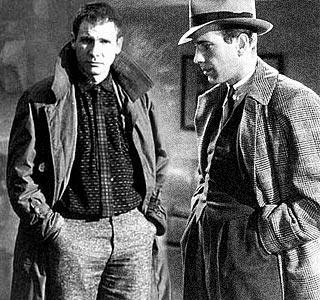 This was not where I planned for the conversation to go that day, so I was especially proud that the students were making connections between the readings and bringing them up. I will confess that none of us really understood Mercerism, but we feel that we all have a greater understanding of empathy. In preparation for teaching this book, I found a very interesting podcast by David Gill that helped me formulate some of my ideas. Later, I found an interview with Gill that was also helpful. One of Gill’s interesting insights in this interview is that “Scott wanted to talk about how great Androids could be. Dick wanted to talk about how crummy humans could be.”
This was not where I planned for the conversation to go that day, so I was especially proud that the students were making connections between the readings and bringing them up. I will confess that none of us really understood Mercerism, but we feel that we all have a greater understanding of empathy. In preparation for teaching this book, I found a very interesting podcast by David Gill that helped me formulate some of my ideas. Later, I found an interview with Gill that was also helpful. One of Gill’s interesting insights in this interview is that “Scott wanted to talk about how great Androids could be. Dick wanted to talk about how crummy humans could be.”
I planned the syllabus so that the students could watch Blade Runner while I was away at the Blackfriars Conference. Because of this, I started out training them to watch PKD as interpreted by Ridley Scott. Once I started teaching I realized that I could have spent a month just doing this. However, in my shorthand version, I tried to introduce the students quickly to hard-boiled detectives and film noir. I explained to them how Blade Runner interprets Do Androids through these two genres. In my opinion, Scott’s Deckard is the descendant of Philip Marlowe and Sam Spade—PKD’s Deckard, not so much. I showed the students the openings (15-30 minutes) of three movies, Laura (1944), Double Indemnity (1944), and L.A. Confidential (1997). I wanted them to see the noir visual characteristics of light and shadow as well as hear the typical hard-boiled, tough guy patter. If I had more time, I would have added The Big Sleep (1946) to really encapsulate the characteristics of the detective. I was able to show the students the first section of Blade Runner before I left for the conference. We were able to compare Scott’s use of smoke, light and shadow with the scenes that we watched in the other movies.
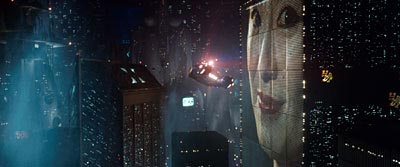 The students finished most of the movie while I was away, and then we watched the ending when I returned. We discussed the ambiguous ending and the different characterizations of Deckard, Rachael, Pris and Roy. The students were very interested in the setting and were somewhat confused by the prevalence of Asian culture. I explained to them that Dick was a northern Californian and that Do Androids is set in San Francisco (they had missed the clues). At that point, someone made the connection to Chinatown, and they decided they liked Scott’s choice once they understood the reasons for it.
The students finished most of the movie while I was away, and then we watched the ending when I returned. We discussed the ambiguous ending and the different characterizations of Deckard, Rachael, Pris and Roy. The students were very interested in the setting and were somewhat confused by the prevalence of Asian culture. I explained to them that Dick was a northern Californian and that Do Androids is set in San Francisco (they had missed the clues). At that point, someone made the connection to Chinatown, and they decided they liked Scott’s choice once they understood the reasons for it.
I learned long ago that when teachers teach texts that they love too much they are bound to get their feelings hurt when the students don’t react the way they wish. I tried to protect myself with Blade Runner and observed some interesting things. First, in the students’ minds Blade Runner, Double Indemnity, and Metropolis are all “old movies.” They always react to the alterity of the movies first before they react to the narratives. They have a hard time either ignoring or embracing the strangeness of the form. Second, they were able to watch the movie without all of the 80s popular culture baggage that I experienced then and still experience now. For example, they have no sense of Darryl Hannah or Rutger Hauer outside that film, while these actors’ later success has always influenced my subsequent viewings of the movie. At one point I mentioned that the movie was released on the tail of Harrison Ford’s success as Han Solo and Indiana Jones. A student said “Oh, that’s who he is. I thought he looked familiar.” All I could do was shrug. In a way, this lack of knowledge gave them a purer viewing experience than I could ever have. Third, the students preferred the movie to the book but were not always able to articulate why. With prodding, they figured out that the sex between Rachael and Deckard was off-putting in the book but not in the movie because in the movie there was a hope that the catalyst was romance not ego or manipulation. 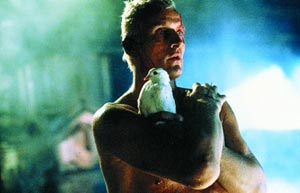 They also liked Deckard better in the movie because he seems stronger. I explained to them that their expectations had been programmed by the hard-boiled detective even though they have never seen a Humphrey Bogart movie and don’t know who he is (really, they don’t). They missed the gadgets in the movie but not Mercerism. They were also surprised that mankind’s relationship with animals was such a footnote in the movie since it was so important in the book.
They also liked Deckard better in the movie because he seems stronger. I explained to them that their expectations had been programmed by the hard-boiled detective even though they have never seen a Humphrey Bogart movie and don’t know who he is (really, they don’t). They missed the gadgets in the movie but not Mercerism. They were also surprised that mankind’s relationship with animals was such a footnote in the movie since it was so important in the book.
All in all, this was a successful section, but it has made me think about PKD even more. I’ve not read many of his novels, only The Man in the High Castle besides Do Androids, but I have been following Charles Dee Mitchell’s blog on this site, and it is helping me decide which books I might want to read (and the ones that I don’t).
Philip K. Dickathon: The Three Stigmata of Palmer Eldritch
Guest Blogger and WWEnd Member, Charles Dee Mitchell, has contributed a great many book reviews to WWEnd and we’ve invited him to contribute to our blog. This is the latest in Dee’s series of Philip K. Dick reviews that he started on his blog www.potatoweather.blogspot.com. We’ll be posting one every week until he runs out of reviews or gets tired of Philip K. Dick books.
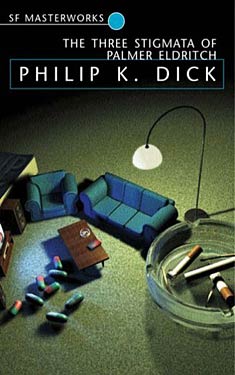 This is how bad things have gotten. Earth is over-heated and over-crowded. If you go outside during the day you must wear a portable cooling pack and stay under anti-thermal protective shades until you can grab a passing jet taxi or "thermosealed, interbuilding commute car." The U.N. has a forced emigration policy designed to provide colonists to Mars and a few other locations. But everyone knows that life off Earth will be even more miserable than what they face here. The colonists serve no real purpose since agriculture is difficult with frozen methane storms and pesky alien creatures that may eat either your struggling crops or yourself. When draft notices arrive, anyone who can afford one hires a psychiatrist in a box. Its purpose is to keep your mind so addled you will never pass the psych examination when the U.N. tries to ship you off to the boonies.
This is how bad things have gotten. Earth is over-heated and over-crowded. If you go outside during the day you must wear a portable cooling pack and stay under anti-thermal protective shades until you can grab a passing jet taxi or "thermosealed, interbuilding commute car." The U.N. has a forced emigration policy designed to provide colonists to Mars and a few other locations. But everyone knows that life off Earth will be even more miserable than what they face here. The colonists serve no real purpose since agriculture is difficult with frozen methane storms and pesky alien creatures that may eat either your struggling crops or yourself. When draft notices arrive, anyone who can afford one hires a psychiatrist in a box. Its purpose is to keep your mind so addled you will never pass the psych examination when the U.N. tries to ship you off to the boonies.
Barney Mayerson’s shrink is Dr. Smile, and he is supposed to be one of the best. But Barney should be able to beat his draft notice in any case. He is the New York Pre-Fash consultant for Perky Pat Enterprises. This means he uses his precognitive abilities to judge whether products presented as possible new additions to Perky Pat’s layout will be a success. PP is a doll with a dreamy life and dreamy boyfriend –let’s face it, they’re Barbie and Ken. Colonists in their Martian hovels spend hours playing with Perky Pat, aided by the illegal drug, Can-D. (The drug is manufactured on Venus by Perky Pat Enterprises.) A chaw of Can-D gives participants up to an hour or so of complete identification with PP and her world.
Life for Barney, his new girlfriend/assistant Betty, and their boss Leo Bolero is good until word comes that renegade industrialist Palmer Eldritch has crash landed on Pluto after a decade spent outside the solar system. Rumor has it that that he has brought back with him a new drug, Chew-Z. (PKD was never one to shy away from puns.) Chew-Z is better than Can-D. It requires no layouts but instead puts the user into a completely realized fantasy world. And Eldritch has won U.N approval, so it is legal. Perky Pat Enterprises will be destroyed.
This might be a good time to mention that The Three Stigmata of Palmer Eldritch is PKD‘s first overtly religious novel. It is one of seven novels written during the amphetamine-fueled years of 1963/64. There is some question as to when PKD first took LSD, but it is difficult not to imagine Can-D and Chew-Z as versions of marijuana and acid. Can-D is a party drug. Chew-Z promises to reveal new levels of reality. It is part of a spiritual quest, but it could also be a trap. There comes a Voltairian moment when Barney decides to chuck everything and just tend his own scraggly Martian garden. That doesn’t last for long. Barney’s quest will bring him into contact with the world of Chew-Z, Palmer Eldritch himself, and whatever exists beyond Palmer Eldritch.
This is the book that 30 years ago sold me on Philip K. Dick. I had seen Blade Runner and read, since it was supposed to be PKD’s best novel, The Man in the High Castle. I liked it OK, but then I happened to pick up Palmer Eldritch. The screwball pacing, deadpan humor, and imaginative monsters were the perfect cover for the serious thought that lurked in the background. Even though I was hooked — an appropriate term when discussing PKD — I read him only sporadically until this past year. Now reading all his SF in more or less chronological order is at times a pleasure, a chore, and even saddening. It’s my own Chew-Z trip. And I am just now getting to the good stuff.
Philip K. Dickathon: The Game-Players of Titan
Guest Blogger and WWEnd Member, Charles Dee Mitchell, has contributed a great many book reviews to WWEnd and we’ve invited him to contribute to our blog. This is the latest in Dee’s series of Philip K. Dick reviews that he started on his blog www.potatoweather.blogspot.com. We’ll be posting one every week until he runs out of reviews or gets tired of Philip K. Dick books.
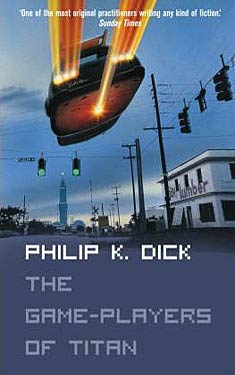 "Anyhow, Pete Garden, you were psychotic and drunk and on amphetamines and hallucinating, but basically you perceived the reality that confronts us…"
"Anyhow, Pete Garden, you were psychotic and drunk and on amphetamines and hallucinating, but basically you perceived the reality that confronts us…"
Philip K. Dick must have dreamed that any one of his five wives or several girlfriends would one day sit across the breakfast table and speak those words to him. I don’t know that he was ever psychotic, that term was tossed around differently in the 1960’s than it would be today. But drunk and on amphetamines? Yes. Hallucinating? During the time he was writing this novel PKD walked daily from his home to his "writing shack" about a mile down the road. In the blue, Northern California sky, he saw a gigantic malevolent face. "It was immense, it filled like a quarter of the sky. It had empty slots for eyes — it was metal and cruel and, worst of all, it was God." An Episcopal priest PKD consulted suggested it was a vision of Satan. Whatever the case, it didn’t go away for days. So, I think that is another "yes" for hallucinating.
In The Game-Players of Titan, earth has been dealt a double blow. As per usual with Dick, there has been an atomic war, this one started by the Red Chinese using a new weapon developed in East Germany. (Nice period details, there.) The radiation released by the new weapon sterilizes the populations it is directed against, but wind currents being what they are, the Red Chinese have inadvertently almost completely sterilized the human race. To add insult to injury, beings from Titan, the largest moon of Saturn, have invaded and conquered earth. They are the Vugs, oversized amoebas that sound a bit like Al Capp’s Shmoo. Humans find them irritating and keep Vug sticks on hand for pushing them out of rooms. But the Vugs are, in their way, benevolent landlords. Longevity drugs allow humans to live into their hundreds while never looking much over 30 or 40 years of age. With earth’s population in the low millions, lucky humans are Bindmen, property owners whose properties include towns, cities, and vast swathes of the depopulated planet. If you are a Bindman you must also play the Titans’ game.
The Titans’ game seems like nothing more than a rudimentary board game, a simplified form of Monopoly but with all your landholdings at stake. Peter Garden’s loss of Berkeley in the first chapter of the book sets in motion events that will involve murder, interplanetary travel, telekinesis, ESP, and large quantities of alcohol and amphetamines.
Along with Berkeley, Garden loses his current wife, but acquires a new one that same night. Another purpose of the game is to keep reshuffling human couples in hopes of finding those who can still "get lucky," the current term for becoming pregnant. Garden’s spectacular bender that takes up much of the book occurs when he discovers that with his new wife he has gotten lucky for the first time and on their first night. He ingests every pill in the house and starts hitting the bars. What he discovers are conspiracies within conspiracies, Vug infiltration of his closest friends, and a offer to play the ultimate game to decide the fate of the earth.
The Game-Players of Titan is PKD really hitting his stride. It is a masterpiece of paranoia, where no one can be trusted to be who they claim to be, where rules are made to be broken, and the protagonist must bluff his way through a game that he knows is a deadly sham. And how do you go about bluffing if half the people in the room can read your mind? The fact that PKD works out a method implies that he had spent far too much energy in his personal life dealing with just barely more earthbound versions of these same issues. And remember that every morning, on his walk to his typewriter, he must endure the glaring, empty eyes of a malevolent god.
Philip K. Dickathon: Dr. Bloodmoney
Guest Blogger and WWEnd Member, Charles Dee Mitchell, has contributed a great many book reviews to WWEnd and we’ve invited him to contribute to our blog. This is the latest in Dee’s series of Philip K. Dick reviews that he started on his blog www.potatoweather.blogspot.com. We’ll be posting one every week until he runs out of reviews or gets tired of Philip K. Dick books.
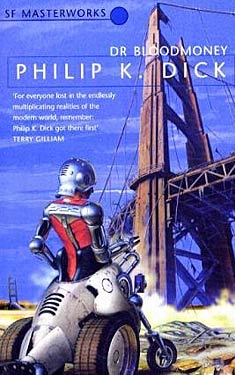 Thank God for editors. PKD proposed two titles for this post-nuclear apocalypse novel: In Earth’s Diurnal Course and A Terran Odyssey. Donald Wolheim at Ace came up with Dr. Bloodmoney: or How We Got Along After the Bomb. Wolheim’s title might have been a flagrant effort to cash in on Stanley Kubrick’s Dr. Strangelove: or How I Learned to Stop Worrying and Love the Bomb, but at least it did not include the word "diurnal," and it did give some hint to what the book is about.
Thank God for editors. PKD proposed two titles for this post-nuclear apocalypse novel: In Earth’s Diurnal Course and A Terran Odyssey. Donald Wolheim at Ace came up with Dr. Bloodmoney: or How We Got Along After the Bomb. Wolheim’s title might have been a flagrant effort to cash in on Stanley Kubrick’s Dr. Strangelove: or How I Learned to Stop Worrying and Love the Bomb, but at least it did not include the word "diurnal," and it did give some hint to what the book is about.
This is one of the dozen or so novels PKD wrote in 1963/64, but due to the build up of back inventory, it was not published until 1965. It is surprisingly idyllic given the subject matter and the amount of amphetamines the author was ingesting at the time. There had been two post-nuclear bestsellers in the late 1950’s, Pat Frank’s Alas, Babylon — still, I understand, a favorite for middle school book reports — and Neville Shute’s On the Beach, which as both a novel and film seemed determined to prove just how tedious it would be to wait for death from radiation poisoning. PKD gets in a sly dig at the latter in his own novel. Walt Dangerfield, a would-be Martian colonist stuck in eternal earth orbit, broadcasts music and readings for survivors on Earth. One of their most requested songs is Waltzing Matilda, the traditional Australian ballad that served as theme music to On the Beach.
As is his habit, PKD has little interest in what might be the actual effects of an atomic war. His characters go about their lives in Marin County pretty much as they would pre-holocaust. They hold town meetings, they have affairs, they gather mushrooms. They have a resident psychiatrist. They mostly walk or ride bicycles rather than use wood-burning or horse-drawn automobiles. As a community they are insular and suspicious of outsiders, but they should be since jealous outsiders might want to "nap" some vestiges of the good life they maintain. They are also blessed with the best handyman around, Hoppy Harrington, a "phoce," a diminutive for phocomel, those with a congenital deformity that produces flipper-like arms and legs. But Hoppy more than makes up for his shortcomings with his mobile machine and some very special powers. In an early scene, he fixes a turntable by healing it. He gets more dangerous later on.
I just finished this book yesterday, and I am trying to remember if it has a plot. I don’t think it does. It really is a sort of pastoral — with mutants. Rats have learned to play the nose-flute. Cats have developed their own secret language, and dogs make a pitiful attempt at speaking English. By the novel’s end, mail routes are opening again, and some of the characters feel the lure of the big city. They plan to go into the cigarette manufacturing business.
Philip K. Dickathon: We Can Build You
Guest Blogger and WWEnd Member, Charles Dee Mitchell, has contributed a great many book reviews to WWEnd and we’ve invited him to contribute to our blog. This is the latest in Dee’s series of Philip K. Dick reviews that he started on his blog www.potatoweather.blogspot.com. We’ll be posting one every week until he runs out of reviews or gets tired of Philip K. Dick books.
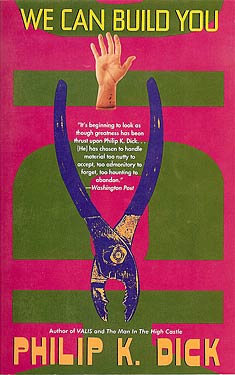 Philip K. Dick always said that he wrote with his fingers. For a decade or so he wrote with his fingers on speed. He would get an outline together, then sit himself at the typewriter and let it flow. He wrote We Can Build You in 1962, his annus mirabilis during which he completed 12 novels. This is the most "stream of conscious" novel of his that I have read. Not in the sense that he is creating characters who share their interior monologues. The interior monologue is all Phil’s, partially put into the mind of his first person narrator, but mostly spilling out in a direct current from his brain to his fingers to the page.
Philip K. Dick always said that he wrote with his fingers. For a decade or so he wrote with his fingers on speed. He would get an outline together, then sit himself at the typewriter and let it flow. He wrote We Can Build You in 1962, his annus mirabilis during which he completed 12 novels. This is the most "stream of conscious" novel of his that I have read. Not in the sense that he is creating characters who share their interior monologues. The interior monologue is all Phil’s, partially put into the mind of his first person narrator, but mostly spilling out in a direct current from his brain to his fingers to the page.
We Can Build You takes place in the distant future of the 1980’s. (PKD seldom bothered setting stories far enough into the future that any of the scientific marvels he works into his plots might be even vaguely possible.) Louis Rosen works for Maury Rock in a shady sales business. They run ads in small-town newspapers announcing the local repossession of a piano or electronic organ, and they are ready to make a deal if it saves shipping. They do pretty well, having survived one Better Business Bureau investigation, but business is drying up. Maury and his engineer have decided instead to go into the simulacra business, creating human simulacra so lifelike they easily pass as the real McCoy, or in this case the real Edwin M. Stanton, Abraham Lincoln’s Secretary of State. They have Lincoln himself in the works.
One quarter of the American population is schizophrenic and spends time in government-run facilities. A small number of citizens are radiation mutants — Louis’s younger brother has his face upside down on his head. Thomas C. Barrow is an entrepreneur who needs to unload some lunar real estate. Pris is a beautiful, recovering schizophrenic and Maury’s daughter. Louis’s love of Pris is driving him insane.
That’s about it. Scene after scene is outrageous but seldom very funny. Perhaps because the narrator is so driven, there is never any distance from the action. Take a scene where Louis is getting legal advice from Abraham Lincoln in a San Francisco nightclub while Earl Grant performs onstage. That’s funny when you think about it.
I can imagine some French critic has described We Can Build You as a meditation on what it means to be human, which I suppose it is. But I have a different idea. Think of it as a ride on a roller coaster that consists of nothing but that first, breathtaking plunge.
Philip K. Dickathon: Divine Invasions
Guest Blogger and WWEnd Member, Charles Dee Mitchell, has contributed a great many book reviews to WWEnd and we’ve invited him to contribute to our blog. This is the latest in Dee’s series of Philip K. Dick reviews that he started on his blog www.potatoweather.blogspot.com. We’ll be posting one every week until he runs out of reviews or gets tired of Philip K. Dick books.
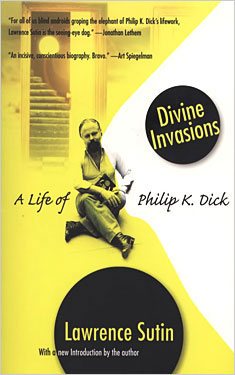 Divine Invasions: A Life of Philip K. Dick
Divine Invasions: A Life of Philip K. Dick
by Lawrence Sutin
My rating: 4 of 5 stars
Answer the following True or False questions about the life of Philip K. Dick:
1) PKD’s twin sister, Jane, died in the first months of her life from malnutrition and poor home care.
2) Later in life, PDK liked to imagine that his sister was living and a lesbian.
3) In high school, PKD’s agoraphobia was at times so bad that he could not go to public events such as concerts. Later he was comfortable in only one Chinese restaurant that had very high sides to its booths.
4) PKD was on amphetamines from the mid 1950’s until around 1972. Some were prescribed, but as the drug scene took off in the 1960’s, he also bought speed off the street.
5) When he was a young man, his mother told him that if he left home he would become a homosexual.
6) PKD’s first wife was also the first woman he had sex with. The marriage lasted six months and Jeanette, the wife, said in court that Phil’s record playing kept her up at night.
7) PKD was married five times, towards the end to women who were barely half his age.
8) Between 1953 and 1957, PKD wrote 14 novels. Between 1963 and 1964 he wrote 11.
9) PKD wrote The Three Stigmata of Palmer Eldritch while tripping on acid.
10) PKD stole pills from his mother and blamed her for not keeping them under lock and key.
11) While trying to live in Canada, PKD felt a mental collapse coming on and pretended to be a heroin addict to get into the only treatment program he could find. He did not like the people he met there.
12) When PKD’s house was broken into, ransacked, and burgled the police were not able to solve the case. They considered PKD to be their most likely suspect.
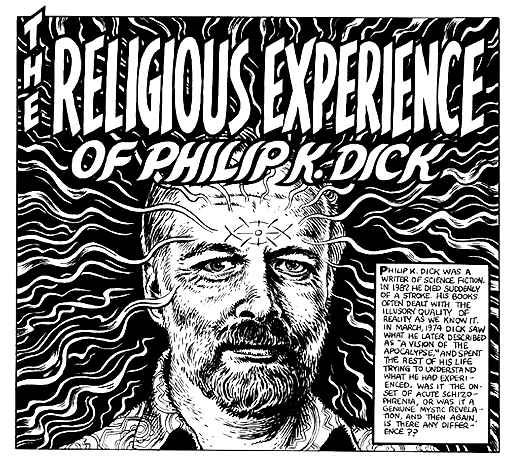 13) When PKD and his wife were investigated by the FBI, his wife fixed dinner for the agents and one agent taught PKD how to drive.
13) When PKD and his wife were investigated by the FBI, his wife fixed dinner for the agents and one agent taught PKD how to drive.
14) In February, 1974, PKD had an impacted wisdom tooth removed and sodium pentathol was used. Later that day, a girl from the drugstore who was delivering Darvon wore an icthus, the Christian fish symbol. When it caught the light, and PKD stared at it, he realized for the first time that he was an immortal being. For the remainder of his life he had visions of the divine and conversations with a divine presence he named VALIS,
15) PKD’s spiritual visions, and many of his other character traits, are common symptoms of temporal lobe epilepsy.
Only number (9) is false. According to his biographer Lawrence Sutin, all the rest are true.



















 Full Details
Full Details

